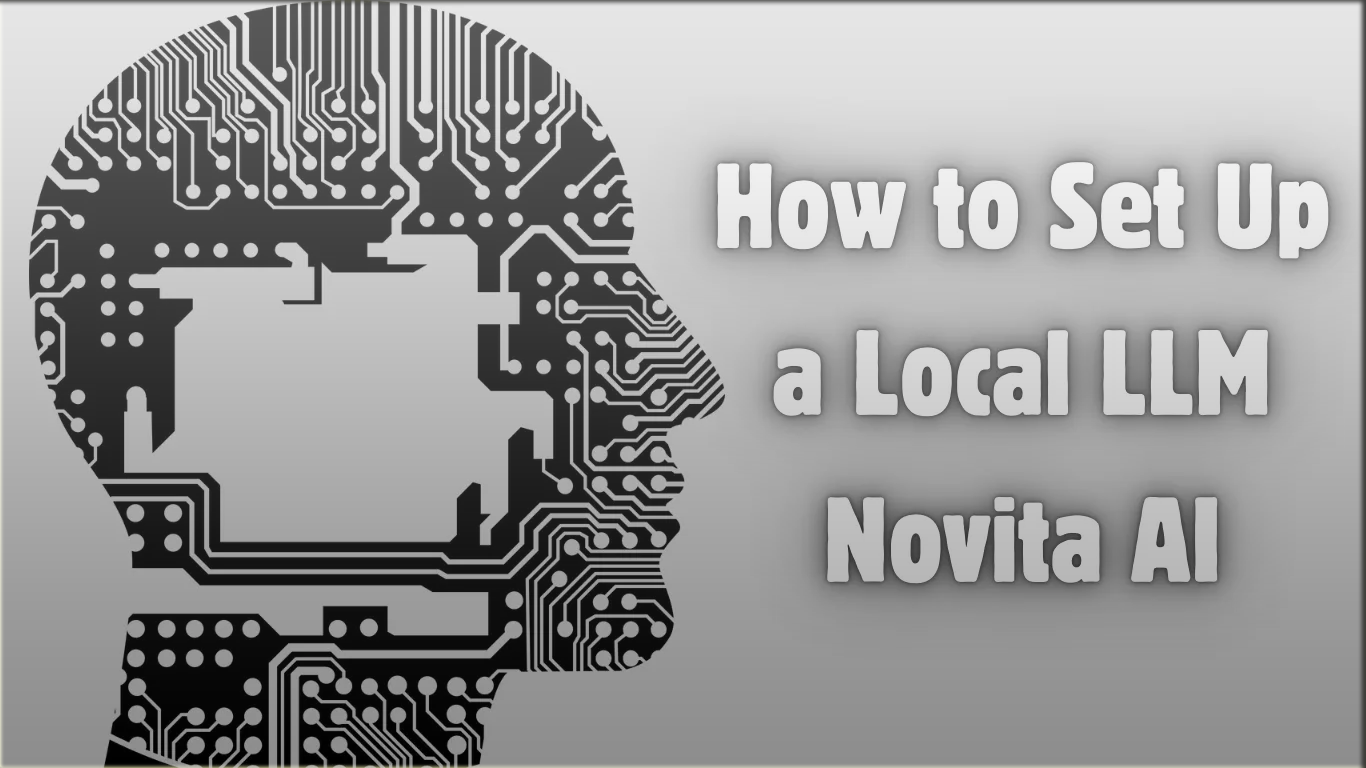How to Set Up a Local LMM with Novita AI: A Comprehensive Guide

Local Language Model Machines (LMMs) like Novita AI are revolutionizing how businesses handle AI-driven tasks. Setting up a local instance of Novita AI offers advantages like data privacy, faster response times, and complete control over your AI model. This guide will walk you through the step-by-step process of configuring Set Up a Local LMM with Novita AI, making it accessible for even beginners.
Why Choose a Local LMM Setup?
- Data Privacy: Your data remains on your infrastructure, ensuring security and compliance.
- Reduced Latency: Local models process tasks faster since they don’t rely on cloud connectivity.
- Customization: Easily tailor models to your specific needs without relying on third-party configurations.
Prerequisites for Novita AI Setup
Before starting, ensure your hardware and software meet the following requirements:
Hardware:
- CPU: Intel i7 or AMD Ryzen 7 or higher.
- RAM: 16GB or more.
- GPU: NVIDIA RTX 3060 or better.
- Storage: 500GB SSD or more.
Software:
- Operating System: Linux (Ubuntu 20.04 or newer preferred).
- Python: Version 3.8 or higher.
- Libraries: TensorFlow, PyTorch, and Novita AI SDK.
Step-by-Step Setup to Set Up a Local LMM with Novita AI
1. Install the Operating System
- Download and install Ubuntu Linux or a compatible OS.
- Update the OS to the latest version for security and performance improvements.
2. Install Python and Essential Libraries
- Install Python from the official Python website.
- Use the following commands to install AI libraries:
pip install tensorflow
pip install torch3. Download Novita AI SDK
- Visit the Novita AI website and download the SDK.
- Follow the installation instructions specific to your OS.
4. Configure Your Environment
- Create a virtual environment in Python to isolate dependencies:
python -m venv novita_env
source novita_env/bin/activateInstall additional dependencies as needed for your project.
5. Set Up the LMM Model
- Option 1: Use a pre-trained model from Novita AI.
- Option 2: Train your custom model by preparing a dataset and fine-tuning.
6. Data Preparation
- Clean and preprocess your dataset. This might include:
- Normalizing text data.
- Removing duplicates or errors.
- Formatting data to fit the model’s input requirements.
7. Train and Optimize the Model
- Begin training your model with your prepared dataset:
python train_model.py --dataset your_dataset.csv --epochs 10Use performance metrics to evaluate the model.
8. Test the Model
- Run the trained model with sample data to verify functionality.
- Adjust parameters based on test results for better accuracy and performance.
9. Customize the User Interface
- Novita AI supports UI customization for better accessibility.
- Add graphs, dashboards, or modules to simplify interactions with the AI.
10. Secure the Setup
- Use firewalls and encryption to protect your local system.
- Regularly back up your model and data.
Optimization Tips to Set Up a Local LMM with Novita AI
1. Efficient hardware utilization:
- Leverage GPU acceleration for faster training and inference.
- Monitor system resources to identify bottlenecks.
2. Regular Model Updates:
- Retrain your model periodically with new data for improved accuracy.
3. Implement mixed-precision training:
- Use techniques like quantization to reduce memory usage without sacrificing performance.
Troubleshooting Common Issues
- Installation Errors: Ensure all dependencies are properly installed.
- Slow Training: Optimize batch size and use GPU acceleration.
- Memory Problems: Add more RAM or reduce dataset size during training.
Real-World Applications
- Customer Support: Automate responses to FAQs.
- Marketing Personalization: Deliver tailored campaigns using insights from data.
- Data Analytics: Generate actionable insights from large datasets.
Here are some frequently asked questions (FAQs) about setting up a local LMM with Novita AI:
1. What are the minimum hardware requirements to set up Novita AI locally?
To run Novita AI locally, ensure your system meets these minimum specifications:
CPU: Intel i7 or AMD Ryzen 7 or better.
RAM: At least 16GB.
GPU: NVIDIA RTX 3060 or equivalent.
Storage: 500GB SSD.
Operating System: Ubuntu 20.04 or newer.
2. Can Novita AI run without a GPU?
Yes, Novita AI can run without a GPU. However, training and inference will be significantly slower compared to using a GPU. For optimal performance, it’s recommended to use a high-end GPU.
3. How do I download the Novita AI SDK?
You can download the Novita AI SDK from the official Novita AI website. Ensure you download the version compatible with your operating system and follow the provided installation steps.
4. What is the best way to optimize model training?
To optimize training:
Use GPU acceleration.
Optimize batch sizes and learning rates.
Leverage techniques like mixed-precision training to reduce memory usage.
5. Can I integrate Novita AI with other AI frameworks?
Yes, Novita AI supports integration with popular AI frameworks such as TensorFlow and PyTorch. This allows you to combine models or workflows easily.
6. What kind of data can I use with Novita AI?
You can use text, image, or numerical data. Ensure the data is properly processed for the best results.
Clean and normalize text.
Resize and label images.
Format numerical data for input compatibility.
7. What should I do if I encounter CUDA errors?
CUDA errors typically occur due to incompatible versions or missing drivers. Ensure:
Your GPU drivers are up to date.
CUDA and PyTorch versions are compatible with each other.
8. Is it possible to run Novita AI offline?
Yes, once you have downloaded the necessary models and dependencies, Novita AI can run entirely offline, making it a secure option for businesses.
9. How can I improve the accuracy of my model?
To enhance accuracy:
Use larger, high-quality datasets.
Fine-tune pre-trained models.
Experiment with hyperparameter tuning.
10. What are the common troubleshooting steps for setup issues?
Installation Errors: Reinstall dependencies or check for missing libraries.
Slow Performance: Optimize GPU usage or reduce model size.
Memory Issues: Add more RAM or adjust training parameters like batch size.


